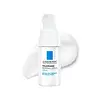What's inside
What's inside
 Key Ingredients
Key Ingredients

 Benefits
Benefits

 Concerns
Concerns

 Ingredients Side-by-side
Ingredients Side-by-side

Water
Skin ConditioningDipropylene Glycol
HumectantButylene Glycol
Humectant1,2-Hexanediol
Skin ConditioningGlycerin
HumectantCetearyl Olivate
Sorbitan Isostearate
EmulsifyingHydroxyethyl Acrylate/Sodium Acryloyldimethyl Taurate Copolymer
Emulsion StabilisingCarbomer
Emulsion StabilisingPvm/Ma Copolymer
Emulsion StabilisingSorbitan Olivate
EmulsifyingCeramide NP
Skin ConditioningCholesterol
EmollientPhytosphingosine
Skin ConditioningPolyglyceryl-10 Myristate
Skin ConditioningSodium Hyaluronate
HumectantStearic Acid
CleansingHydrolyzed Hyaluronic Acid
HumectantOleic Acid
EmollientCaprylic/Capric Triglyceride
MaskingSodium Acetylated Hyaluronate
HumectantEthylhexylglycerin
Skin Conditioning3-O-Ethyl Ascorbic Acid
Skin ConditioningTocopherol
AntioxidantGlyceryl Acrylate/Acrylic Acid Copolymer
HumectantHydrogenated Lecithin
EmulsifyingMenthyl Lactate
MaskingEthyl Menthane Carboxamide
TonicMethyl Diisopropyl Propionamide
MaskingSodium Phytate
Caprylhydroxamic Acid
Lactic Acid
BufferingTromethamine
BufferingCaprylyl Glycol
EmollientWater, Dipropylene Glycol, Butylene Glycol, 1,2-Hexanediol, Glycerin, Cetearyl Olivate, Sorbitan Isostearate, Hydroxyethyl Acrylate/Sodium Acryloyldimethyl Taurate Copolymer, Carbomer, Pvm/Ma Copolymer, Sorbitan Olivate, Ceramide NP, Cholesterol, Phytosphingosine, Polyglyceryl-10 Myristate, Sodium Hyaluronate, Stearic Acid, Hydrolyzed Hyaluronic Acid, Oleic Acid, Caprylic/Capric Triglyceride, Sodium Acetylated Hyaluronate, Ethylhexylglycerin, 3-O-Ethyl Ascorbic Acid, Tocopherol, Glyceryl Acrylate/Acrylic Acid Copolymer, Hydrogenated Lecithin, Menthyl Lactate, Ethyl Menthane Carboxamide, Methyl Diisopropyl Propionamide, Sodium Phytate, Caprylhydroxamic Acid, Lactic Acid, Tromethamine, Caprylyl Glycol
Water
Skin ConditioningGlycerin
HumectantButylene Glycol
HumectantPropanediol
SolventSqualane
EmollientButyrospermum Parkii Butter
Skin ConditioningPentylene Glycol
Skin ConditioningNiacinamide
SmoothingCellulose
AbsorbentZea Mays Starch
AbsorbentPolysorbate 20
EmulsifyingSalvia Miltiorrhiza Root Extract
Skin ConditioningGlyceryl Acrylate/Acrylic Acid Copolymer
HumectantSphingomonas Ferment Extract
Skin ConditioningAmmonium Polyacryloyldimethyl Taurate
Emulsion StabilisingHydroxyacetophenone
AntioxidantCitric Acid
BufferingTrisodium Ethylenediamine Disuccinate
Acetyl Dipeptide-1 Cetyl Ester
Skin ConditioningWater, Glycerin, Butylene Glycol, Propanediol, Squalane, Butyrospermum Parkii Butter, Pentylene Glycol, Niacinamide, Cellulose, Zea Mays Starch, Polysorbate 20, Salvia Miltiorrhiza Root Extract, Glyceryl Acrylate/Acrylic Acid Copolymer, Sphingomonas Ferment Extract, Ammonium Polyacryloyldimethyl Taurate, Hydroxyacetophenone, Citric Acid, Trisodium Ethylenediamine Disuccinate, Acetyl Dipeptide-1 Cetyl Ester
 Reviews
Reviews

Ingredients Explained
These ingredients are found in both products.
Ingredients higher up in an ingredient list are typically present in a larger amount.
Butylene Glycol (or BG) is used within cosmetic products for a few different reasons:
Overall, Butylene Glycol is a safe and well-rounded ingredient that works well with other ingredients.
Though this ingredient works well with most skin types, some people with sensitive skin may experience a reaction such as allergic rashes, closed comedones, or itchiness.
Learn more about Butylene GlycolGlycerin is already naturally found in your skin. It helps moisturize and protect your skin.
A study from 2016 found glycerin to be more effective as a humectant than AHAs and hyaluronic acid.
As a humectant, it helps the skin stay hydrated by pulling moisture to your skin. The low molecular weight of glycerin allows it to pull moisture into the deeper layers of your skin.
Hydrated skin improves your skin barrier; Your skin barrier helps protect against irritants and bacteria.
Glycerin has also been found to have antimicrobial and antiviral properties. Due to these properties, glycerin is often used in wound and burn treatments.
In cosmetics, glycerin is usually derived from plants such as soybean or palm. However, it can also be sourced from animals, such as tallow or animal fat.
This ingredient is organic, colorless, odorless, and non-toxic.
Glycerin is the name for this ingredient in American English. British English uses Glycerol/Glycerine.
Learn more about GlycerinGlyceryl Acrylate/Acrylic Acid Copolymer is made up of glycerin and polyacrylic acid. It helps hydrate your skin as a humectant.
This ingredient forms a hydrogel that delivers moisturizing, water-based ingredients to the skin. It is also used to thicken a product and to give it a smooth texture.
Acrylic acid itself is toxic, but the polymer form (this ingredient) is too large to penetrate skin, making it non-toxic.
Learn more about Glyceryl Acrylate/Acrylic Acid CopolymerWater. It's the most common cosmetic ingredient of all. You'll usually see it at the top of ingredient lists, meaning that it makes up the largest part of the product.
So why is it so popular? Water most often acts as a solvent - this means that it helps dissolve other ingredients into the formulation.
You'll also recognize water as that liquid we all need to stay alive. If you see this, drink a glass of water. Stay hydrated!
Learn more about Water